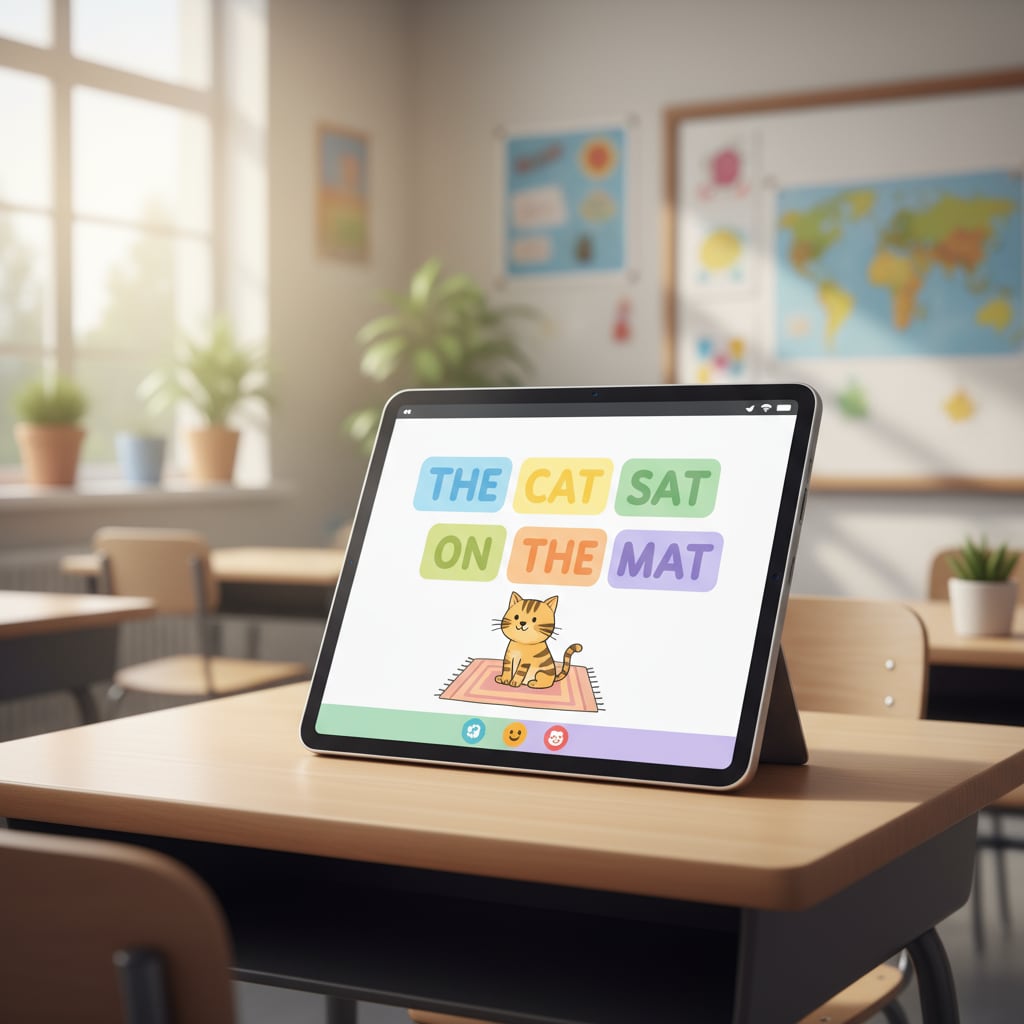AI tools, decodable reading materials, and educational applications are at the forefront of transforming K12 reading education. The advent of artificial intelligence has opened up new horizons for educators, students, and parents alike. In this digital age, the integration of AI in reading instruction is not just a trend but a necessity for enhancing learning outcomes.

The Rise of AI in Reading Education
AI has rapidly become an invaluable asset in the field of education. With its ability to analyze vast amounts of data, AI can understand the unique learning needs of each student. For example, it can identify areas where a student may be struggling with reading, such as phonics or vocabulary. This personalized approach is a significant departure from traditional one-size-fits-all teaching methods. As a result, educators can now tailor their instruction to meet the specific requirements of individual students, thereby improving their reading skills more effectively. Artificial intelligence in education on Wikipedia
The Significance of Decodable Reading Materials
Decodable reading materials play a crucial role in K12 literacy instruction. These materials are designed to help students learn to read by breaking down words into their individual sounds, known as phonemes. By using decodable texts, students can practice applying phonics rules and build their confidence in reading. AI tools have made it possible to generate a wide range of decodable reading materials that are not only engaging but also tailored to the specific skill levels of students.

For instance, an AI system can create stories with words that contain the phonics patterns a student is currently learning. This targeted approach helps students master reading skills more efficiently.
Moreover, decodable reading materials can bridge the gap between students with different reading abilities. In a traditional classroom setting, it can be challenging for teachers to provide individualized reading materials for every student. However, AI-generated decodable texts can ensure that each student receives materials that match their reading level, promoting equal opportunities for learning.
Readability guidance: As we can see, the use of decodable reading materials in conjunction with AI tools is a game-changer in K12 reading education. We have explored how AI is being used to personalize learning and the importance of decodable materials. Next, we will look at the benefits for different stakeholders in the educational ecosystem.
Benefits for Teachers
Teachers stand to gain significantly from the integration of AI tools and decodable reading materials. Firstly, AI can assist in lesson planning. It can analyze the reading skills of the entire class and suggest appropriate decodable texts for different learning objectives. This saves teachers a great deal of time and effort in selecting the right materials. In addition, AI can provide real-time feedback on students’ reading progress. Teachers can use this information to adjust their teaching strategies and provide targeted support to struggling students. Educational technology on Britannica
Advantages for Students
For students, the combination of AI and decodable reading materials offers a more engaging and effective learning experience. AI-powered reading tools can provide interactive features such as audio pronunciation, which helps students with correct word pronunciation. Decodable materials, on the other hand, give students the opportunity to practice reading independently and build their confidence. Students can progress at their own pace, focusing on the areas where they need more practice. This personalized learning environment encourages students to develop a love for reading.
Support for Parents
Parents also play a vital role in a child’s reading development. AI tools can help parents stay informed about their child’s reading progress. They can receive reports on their child’s reading skills, areas of improvement, and recommended reading materials. This enables parents to support their children at home more effectively. Decodable reading materials can be used by parents during reading sessions with their children, providing a structured and engaging way to enhance reading skills.
In conclusion, AI tools, decodable reading materials, and educational applications are revolutionizing K12 reading education. The personalized learning experiences, the bridging of ability gaps, and the support provided to teachers, students, and parents are all testament to the transformative power of this technology. As we move forward, it is essential to continue exploring and leveraging these tools to improve literacy rates and ensure a brighter future for our students.


